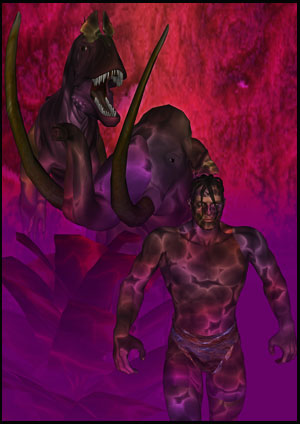The book I'm talking about here appears to be around 300 pages ( I have the Kindle version) and it is a science book but I wouldn't call it an academic book, it appears to be targeted towards the educated lay person.
http://www.amazon.com/Cosmos-in-Collision-ebook/dp/B00C4MF8UE/ref=sr_1_1?ie=UTF8&qid=1364793440&sr=8-1&keywords=cosmos+in+collision
The main ideas of the book are not overly complicated.
Four of our planets (Nepturn, Saturn, Mars, Earth) have the same roughly 26-degree axis tilt, indicating they were captured as a group by our sun at some relatively recent time. The most common version of a theory as to what life on this planet was like under those conditions ("Saturn Theory") amounts to claiming that Earth and Mars were moons of Saturn which would have been a brown dwarf star in prehistoric times. It is thought that moons or planets orbiting dwarf stars do so INSIDE the heliospheres of those stars and that the light they get is missing the middle part of the light spectrum, i.e. that you'd be living in a deep purple world:
http://saturndeathcult.com/the-sturn-death-cult-part-1/a-timeless-age-in-a-purple-haze/

Hence also the huge eyes of many of Earth's oldest creatures, particularly dinosaurs and hominids, as per the images above. There would have been enough radiant energy for warmth, but not much light.
At the same time, and minus the bodies with the 26-degree axis tilts, the Sun/Jupiter/Mercury part of the system would have looked more like what is turning out to be normal for gas giants orbiting main-sequence stars i.e. Jupiter would have been inside the Sun's habitable zone and the four large moons of Jupiter would have gotten light both from Jupiter AND the sun. Particularly humans and dolphins, with the smallest relative eye size of advanced creatures, would have had to have originated in that part of the system and not on Earth or Mars, for either of which, at the time, they would have been hideously maladapted.
The second part of the book describes the reasons for believing that the largest of Jupiter's moons, Ganymede, would have been a sort of a fresh-water ocean paradise under those conditions.